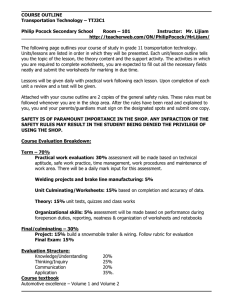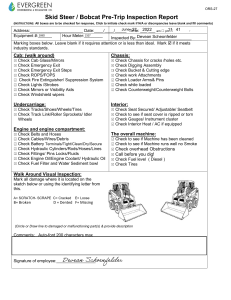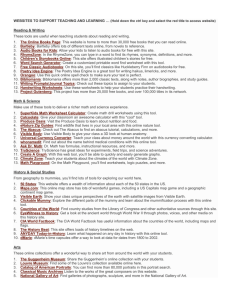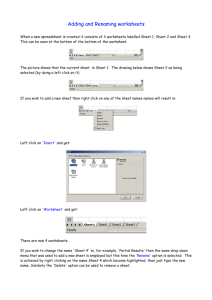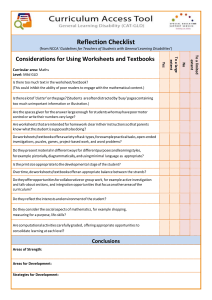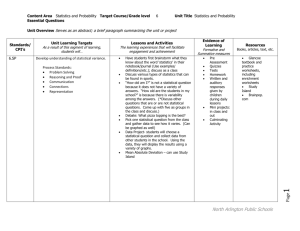COURSE OUTLINE Transportation Technology – TTJ2O1 Philip Pocock Secondary School
advertisement
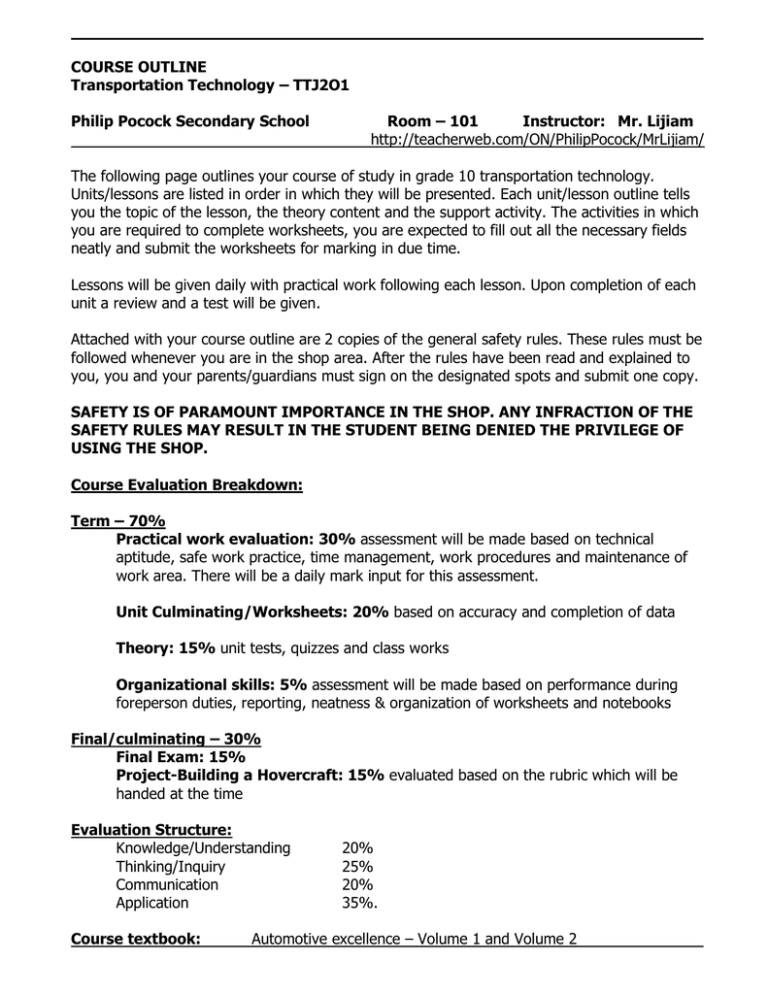
COURSE OUTLINE Transportation Technology – TTJ2O1 Philip Pocock Secondary School Room – 101 Instructor: Mr. Lijiam http://teacherweb.com/ON/PhilipPocock/MrLijiam/ The following page outlines your course of study in grade 10 transportation technology. Units/lessons are listed in order in which they will be presented. Each unit/lesson outline tells you the topic of the lesson, the theory content and the support activity. The activities in which you are required to complete worksheets, you are expected to fill out all the necessary fields neatly and submit the worksheets for marking in due time. Lessons will be given daily with practical work following each lesson. Upon completion of each unit a review and a test will be given. Attached with your course outline are 2 copies of the general safety rules. These rules must be followed whenever you are in the shop area. After the rules have been read and explained to you, you and your parents/guardians must sign on the designated spots and submit one copy. SAFETY IS OF PARAMOUNT IMPORTANCE IN THE SHOP. ANY INFRACTION OF THE SAFETY RULES MAY RESULT IN THE STUDENT BEING DENIED THE PRIVILEGE OF USING THE SHOP. Course Evaluation Breakdown: Term – 70% Practical work evaluation: 30% assessment will be made based on technical aptitude, safe work practice, time management, work procedures and maintenance of work area. There will be a daily mark input for this assessment. Unit Culminating/Worksheets: 20% based on accuracy and completion of data Theory: 15% unit tests, quizzes and class works Organizational skills: 5% assessment will be made based on performance during foreperson duties, reporting, neatness & organization of worksheets and notebooks Final/culminating – 30% Final Exam: 15% Project-Building a Hovercraft: 15% evaluated based on the rubric which will be handed at the time Evaluation Structure: Knowledge/Understanding Thinking/Inquiry Communication Application Course textbook: 20% 25% 20% 35%. Automotive excellence – Volume 1 and Volume 2 Theory Content Unit 1 – Introduction & Applied Work Practice 1.1 1.2 1.3 1.4 1.5 Introduction to TTJ2O1 Careers in Transportation Technology Safety – ongoing throughout the course Hand Tools Fasteners Unit 2 – Running Gear 2.1 2.2 2.3 2.4 Automobile Construction and Chassis Measurements Wheels and Tires Brake Systems Suspension and Steering Systems Unit 3 – Engines & Engine Systems 3.1 3.2 3.3 3.4 3.5 3.6 3.7 3.8 3.9 3.10 Motive power Engine Construction Engine Operation Engine Classification Lubrication System Fuel System Air Induction System Ignition System Exhaust System Cooling System Unit 4 – Electrical Systems 4.1 4.2 4.3 4.4 Basic Electricity Starting System Charging System Lighting System Unit 5 – Introduction to Drive Lines 5.1 5.2 5.3 Introduction to Transmissions Clutches Differentials and Drive Shafts Practical Activities/Projects Most of the practical activities are accompanied with printed instructions and worksheets that need to be filled up and handed for marking Unit 1 - Identify, sort out and familiarise with all the tools available in the shop Using your notes and pictures, identify a list of fasteners from a pile of bolts and nuts Unit 2 - - Identify body styles, major vehicle components and drive styles of various vehicles Take various chassis measurements Replace spare tires, rotate tires, adjust tire pressures, remove and install tires, balance wheels Inspect disc and drum brake systems, remove and reinstall disc brake pads Identify & inspect suspension and steering system components Unit 3 - Disassemble and reassemble a small engine, identify all the engine parts - Perform basic engine services o change oil and filter o replace fuel filter o replace air filter o replace and adjust spark plug gaps o cooling system service Unit 4 - maintain battery posts, boost batteries, replace batteries - replace and adjust alternator belts - replace light bulbs and light assemblies - use multi-meters and test lights to check fuses and circuits - build a hovercraft using toy motors and computer mouse or push switches for controls Unit 5 - Identify drive line components - check and top-up fluids
